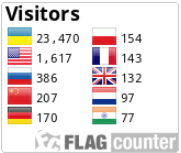UNESCO’S STRATEGY FOR REBUILDING HIGHER EDUCATION IN CRISIS AND EMERGENCY SITUATIONS
DOI:
https://doi.org/10.28925/2518-7635.2016.1.7Keywords:
crisis management, emergency management, higher education, UNESCOAbstract
The paper analyzes the UNESCO’s policy on protecting and development of the contemporary higher education (HE) which faces many challenges on the way towards its development, sustainability, and improvement. Moreover, the articles posits that the importance of determining crisis and emergency factors which impact the HE system in order to comprehend the role of UNESCO and its actions in supporting the HE system and universities in different regions of the world. Therefore, the concepts and characteristics of crisis and emergency risks are provided, the UNESCO’s strategies in responding to the challenges of the contemporary HE in terms of its instability and potential external threats are defined as well as the relevance and effectiveness of mode of operations applied by UNESCO in regulating conflicts and other onerous situations pertinent to HE sector is reasoned.Downloads
References
ASIS International. Organizational Resilience: Security, Preparedness, and Continuity Management Systems-Requirements with Guidance for Use. ASIS SPC. American National Standard. (2009), 1.
Coombs, W. (2007). Ongoing Crisis Communication: Planning, Managing and Responding. Thousand Oaks, CA: Sage.
Dmitrenko, Y. (2015). Adaptation of internally displaced people into university environment by the means of student self-governance. Poltava: Poltava National Pedagogical University named after V. T. Korolenko.
Drabek, T. (1991). Emergency Management: Principles and Practice for Local Government. Washington D. C.: International City Management Association.
Global Education Monitoring Report (2016). Retrieved from http:// en.unesco.org/gem-report/about
Global Education Cluster. Integrating Conflict and Disaster Risk Reduction into Education Sector Planning. (2011). Retrieved from http://toolkit.ineesite.org/ resources/ineecms/uploads/1053/IIEP_Guidance_notes_EiE_EN.pdf
Olesya
Horvat, P. (2010). Conflict and Education – Data Analysis on the Public’s Views on Education in Conflict-Affected Countries. Education for All Global Monitoring Report 2011. The Hidden Crisis: Armed Conflict and Education, Paris: UNESCO.
Novelli, M., Mieke, L. (2008). Conflict, Education and the Global South: New Critical Directions. International Journal of Educational Development, 28(4): 473-488.
Pearson, C., Clair, J. (1998). Reframing Crisis Management. Academy of Management Review, 23(1), 59-76.
Seeger, M., Sellnow, T., Ulmer, R. (1998). Communication, Organization and Crisis. Communication Yearbook, 21, 231-275.
Shrivastava, P. (1988). Understanding Industrial Crises. Journal of Management Studies, 25(4), 285-304.
Smith, A. (2010). The Influence of Education on Conflict and Peace Building. Education for All Global Monitoring Report 2011. The Hidden Crisis: Armed Conflict and Education. Paris: UNESCO.
Tomlinson, K., Benefield, P. (2005). Education and Conflict: Research and Research Possibilities. Berkshire: National Foundation for Educational Research.
UNESCO. Education in Situations of Emergency, Crisis and Reconstruction. UNESCO Strategy. (2010). Paris: UNESCO.
Venette, S. (2003). Risk Communication in a High Reliability Organization: APHIS PPQ’s Inclusion of Risk in Decision Making. Ann Arbor, MI: UMI Rroquest Information and Learning.
Published
How to Cite
Issue
Section
License
Copyright (c) 2017 The Modern Higher Education Review

This work is licensed under a Creative Commons Attribution-NonCommercial 4.0 International License.













